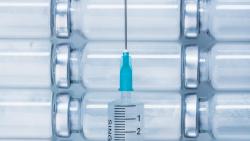
OR WAIT null SECS
- About Us
- Advertise
- Contact Us
- Editorial Info
- Editorial Contacts
- Editorial Advisory Board
- Do Not Sell My Personal Information
- Privacy Policy
- Terms and Conditions
© 2024 MJH Life Sciences™ and Pharmaceutical Technology. All rights reserved.
Establishing a Framework for Reliable Pharma Labeling
By taking a strategic and evidence-based approach, companies can leverage the insights gained from stability studies to establish robust labeling.
Stability studies are a cornerstone of pharmaceutical quality. They ensure that a pharmaceutical product will maintain its efficacy and safety for its established shelf life to protect patient safety. These studies are the basis of two items on a product label: storage conditions and shelf life (expiry). Stability studies are also used to make decisions about production processes, formulation, and packaging, and to determine the re-testing period once a product is on the market. This article explains major aspects of the stability testing process and key considerations, including how a strategic and evidence-based approach can ensure robust labeling and maximum product quality while ensuring an efficient use of resources.
A robust stability strategy requires good planning
Pharmaceutical companies need a robust stability program, with clearly defined processes and detailed protocols. Although guidelines from the International Council for Harmonisation (ICH) and the World Health Organization (WHO) outline stability testing requirements, the guidelines were designed with flexibility to allow companies to use alternative approaches when scientifically justified (1,2).Therefore, it is important to have a solid understanding of regulatory expectations and take a strategic and evidence-based approach to planning a stability program. By doing so, it will be possible to create a suitable framework for these studies that is both efficient and scientifically sound.
Stability studies begin early and continue throughout drug development, with the regulatory requirements and degree of complexity and validation generally increasing through later stages (3). Early studies provide an initial understanding of a product’s stability profile, including degradation pathways. These studies also support decisions about the production process as well as formulation and packaging. All the data gathered from stability studies throughout development are then used to design the protocols for the final stability testing for regulatory submission to obtain market approval, including establishing the re-test period and commercial labeling.
Stability-indicating methods
A critical aspect of stability testing is the development of a stability-indicating method that must be able to separate and quantitate the API and all process impurities and degradation products in drug substance (DS) and drug product (DP) samples (4).
For small-molecule drugs, the primary stability-indicating method most often employs reversed-phase high-performance liquid chromatography (RP–HPLC) with ultraviolet (UV) detection (5). Ultra high-pressure LC is increasingly being used in stability-indicating methods, offering gains in speed, resolution, and sensitivity.
A stability-indicating method is developed through forced degradation studies, also called stress studies, which are carried out under conditions that are more severe than those of accelerated stability tests. Through these studies, a degradant profile can be developed in a short time span, such as a few weeks.
A new publication from authors representing 10 global pharmaceutical companies provides recommendations for designing forced degradation studies, to ensure the studies neither insufficiently stress the tested drugs, which could lead to surprises during long-term studies, nor overstress the drugs, creating risk of generating irrelevant degradation products that are different from those likely to be seen during storage, distribution, or use (6).
Product quality attributes to test
Stability studies should test product quality attributes susceptible to changes during storage that are likely to affect efficacy or safety, and should address physical, chemical, biological, and microbiological attributes (1).
The specific tests needed will vary depending on the product and product type. In addition to potency, degradation products, and process impurities, stability tests may address qualities, such as appearance, moisture, dissolution, hardness, viscosity, and pH, using a variety of analytical techniques. Injectable products will require microbiological testing, and injectables are often sensitive to temperature and light. Some products, such as those formulated for dry powder inhalers, are particularly sensitive to moisture. Certain products will require photostability testing, as described in ICH Q1B (1). In fixed-dose combination products, the interaction between two or more APIs also must be considered (2). Complex formulations such as nanoparticles and microemulsions may also require careful consideration of critical quality attributes. Likewise, there are additional considerations for stability testing of biopharmaceuticals (1,7,8).
Packaging is another important component of stability testing. In the studies, the drug substance or product must be packaged in a container–closure system similar to that which will be used for the marketed product (1,2).
Accelerated stability testing
Accelerated stability testing is normally carried out concurrently with long-term stability testing. Accelerated studies are conducted at higher temperature and humidity levels, to obtain data more quickly (in approximately six months) regarding degradation pathways and rate. These data can be extrapolated to establish a tentative expiration date, but long-term stability testing is required to confirm shelf life (1,3).
Accelerated studies can also be used to confirm the stability of a formulation or to compare the relative stability of alternative formulations. Testing more extreme conditions through accelerated degradation studies can be useful to evaluate the effect of short-term excursions outside the label storage conditions during shipping (1).
Storage conditions and sampling frequency for stability testing
The ICH and WHO guidelines establish the storage conditions under which stability testing should be conducted, and the sampling frequency, for both long-term and accelerated testing. Table I shows a sample protocol.
Climatic zones
Another factor in planning a stability program is the climate where the drugs will be manufactured and marketed. ICH Q1 (R2) applies to climatic zones I and II, covering Europe, North America, and Japan. In 2006, the ICH withdrew the Q1F guideline, leaving the definition of storage conditions for zones III (hot and dry) and IV (hot and humid) to the WHO and the countries in those regions (2, 9).
Global pharmaceutical companies increasingly prefer to design a stability testing program that addresses the conditions of all zones where they plan to market a drug. This creates a more complex study design but provides all the needed data at the time of marketing approval.
WHO suggests label wording for storage conditions in zones III and IV for various sets of stability-testing results (9). It also provides recommended labeling statements for products tested in zone II that are shipped to zone IV (2).
Continuous monitoring
Continuous monitoring after marketing approval is another important aspect of a stability program. Data from stability tests will determine the re-test period, following which, the drug substance should be tested to ensure it’s still suitable to use in the manufacture of drug product (1). ICH Q1E provides recommendations regarding when and how a re-test period can be extended beyond the time addressed by long-term stability data (1).
Reduced-testing strategies: ASAP, bracketing, and matrixing
The industry is showing increased interest in reduced-testing approaches designed to increase efficiency and reduce costs in stability testing. Three examples are accelerated stability assessment program (ASAP) studies, bracketing, and matrixing.
In the ASAP approach, a drug is studied under a few stressed conditions for a very short time, often two weeks, and the results are extrapolated to longer time frames and less extreme conditions. These tests, done early in development, can be a cost-effective way to help predict long-term stability. Formal long-term stability studies are still required (3).
In bracketing, only extreme conditions of product strength, container sizes, or container fills are tested for all time points. The study design assumes that the stability of intermediate levels is represented by the stability of the extremes (1). The risk of this approach is that if one result is out of specification, the stability study must restart from the beginning (3).
In matrixing, a selected subset of samples (representing a given strength or batch) for all factor combinations is tested at a specified time point. At a subsequent time, another subset of samples for all factor combinations is tested. The design assumes that the stability of each subset represents that of all samples at the given time point (1). Matrixing requires sophisticated knowledge of statistical concepts by both the quality professionals carrying out the studies and the regulators reviewing the data—considerations that may be slowing its adoption (3).
Outsourcing stability testing
Stability testing is not a small undertaking, and many small- and mid-sized pharmaceutical companies will need to outsource it. First, the investment in stability chambers is significant. Five different chambers are needed to address all the ICH conditions, and these require resources and expert personnel to qualify them and handle ongoing maintenance, including the required annual temperature mapping. Backup power is also critical; a loss of power during a long-term study would necessitate starting the study from the beginning.
The stability studies themselves can be quite complex—with tens or hundreds of samples of different formulations, subject to several sets of conditions, under study at a given time—and likewise demand significant personnel resources and expertise to conduct them correctly. Thus, it is important to select a provider with extensive stability study experience and comprehensive knowledge of the regulations. Not all contract analytical testing facilities have the capabilities to conduct stability testing. When outsourcing analytical testing, it’s advisable to choose a provider who also offers full capabilities for stability testing, ensuring consistent collaboration with a trusted partner.
Summary
Establishing accurate storage conditions and shelf life for pharmaceutical product labels derives from stability testing, which is critical for ensuring product quality and patient safety. Stability testing also supports decisions about production processes, formulation, and packing. By taking a strategic and evidence-based approach, companies can design a robust stability program that not only meets regulatory requirements and protects patient safety, but also makes the most efficient use of resources and ensures precise labeling.
References
- ICH, Q1 (A-F) Stability (ICH, 2003). www.ich.org/page/quality-guidelines.
- WHO. TRS 1010 - Annex 10: WHO Guidelines on Stability Testing of Active Pharmaceutical Ingredients and Finished Pharmaceutical Products. 2018 (accessed Oct. 25, 2023).
- Dong, M.W.; Huynh-Ba, K. Stability Studies and Testing of Pharmaceuticals: An Overview, LCGC N. Amer. 2020, 38 (6), 325–336.
- FDA. Expiration Dating and Stability Testing for Human Drug Products. FDA.gov (accessed Oct. 25, 2023).
- Dong, M.W.; Huynh-Ba, K.; Ayers, J.T. Development of Stability-Indicating Analytical Procedures by HPLC: An Overview and Best Practices, LCGC N. Amer. 2020, 38 (8), 440–456,
- Zelesky, T;Baertschi, S.W.; Foti, C.; Allain, L.R.; Hostyn, S.; Franca, J.R.; Li, Y.; Marden, S.; Mohan, S.; Ultramari, M.; Huang, Z.; Adams, N.; Campbell, J.M. Jansen, P.J.; Kotoni, D.; Laue, C. Pharmaceutical Forced Degradation (Stress Testing) Endpoints: A Scientific Rationale and Industry Perspective, J. Pharm. Sci. 2023, in press. DOI: 10.1016/j.xphs.2023.09.003.
- Auclair, J.; Rathore, A.S. Analytical Methods to Determine the Stability of Biopharmaceutical Products, LCGC N. Amer. 2023, 41 (1), 23–27. https://doi.org/10.56530/lcgc.na.qc1477t9
- Rivers, M. Determining Shelf Life: Reading the Stability Testing Data. Pharm. Technol. 2021, 45 (10), 48, 50, 56.
- WHO. Stability Testing of Active Pharmaceutical Ingredients and Finished Pharmaceutical Products. Stability Conditions for WHO Member States by Region, Update March 2021 (accessed Oct. 25, 2023).
About the author
Shailesh Vengurlekar is senior vice-president, Quality and Regulatory Affairs, at LGM Pharma.
Article details
Pharmaceutical Technology®
Vol. 47, No. 12
December 2023
Pages 24–27
Citation
When referring to this article, please cite it as Vengurlekar, S. Establishing a Framework for Reliable Pharma Labeling. Pharmaceutical Technology 2023 47 (12).

 Download Issue: Pharmaceutical Technology, December 2023
Download Issue: Pharmaceutical Technology, December 2023

